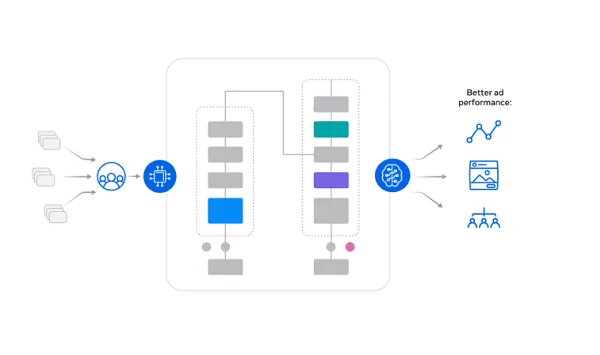MLOps Vs. DevOps: A Comparative Analysis
Nearly everyone in the IT industry is familiar with the term “Machine Learning,” but it is no longer just a catchphrase used in spectacular presentations. The industry has started to include Machine Learning in significant projects as it has become more practical and less theoretical.
By 2022, we’ve already established its worth. How to successfully build a Machine Learning project and securely launch it into production is now the primary concern.
Understanding New Models Of Machine Learning
A crucial component of ML engineering, Machine Learning operations, or MLOps for short, focuses on streamlining and expediting the process of putting ML models into production and maintaining and monitoring them. Collaboration between many teams, including data scientists, DevOps engineers, IT specialists, and others, is a critical component of MLOps.
MLOps may assist businesses in developing and enhancing the effectiveness of their AI and machine learning solutions. By using continuous integration and continuous deployment (CI/CD) methods, MLOps enables collaboration between Machine Learning engineers and data scientists to enhance model performance.
Including the proper monitoring, governance, and validation of ML models expedites the creation of ML models. To further understand how we can develop a consistent workflow that engineers and data scientists can iterate on for Machine Learning projects, let’s look more closely at these words and their relationships.
In this blog, let us discuss the ideas of MLOps and DevOps. We shall first attempt to understand their fundamentals before examining how they differ from one another. As you may know, DevOps aims to combine programming, or the creation of a web application or other piece of software, with testing primarily carried out by QA personnel and deployment. MLOps also have similar goals.
What Exactly Is MLOps?
Data scientists employ a set of “MLOps” techniques to build and maintain machine learning models in the real world efficiently and reliably. Any algorithm used in production is tested by data scientists, DevOps professionals, and machine learning engineers before it is released.
MLOps aims to create a cohesive system in which operations like data ingestion, evaluation, deployment, model training, and others are carried out simultaneously. Without them, data scientists would have to manually complete data purification, model selection, and infrastructure management tasks.
MLOps and DevOps are conceptually quite similar in many ways. However, if you looked closer, you would also see many distinctions. Let’s first understand DevOps before moving on to the distinctions.
What Is DevOps?
DevOps is a method where individuals collaborate in a team to create and distribute software as quickly as possible. Software development and operations teams may produce software more rapidly by working together and iteratively, thanks to DevOps.
The DevOps model enhances communication between your project’s developers and operations personnel. It works best for the following things:
- Launching new features more quickly
- boosts developer and customer happiness simultaneously
- Using feedback loops can improve communication
Some of the fundamental principles of DevOps are:
- Automation
- Collaboration
- Iteration
- Self-service
- Continuous testing and
- Continuous improvement
Key Difference Between MLOps And DevOps
Now that we are clear about both the concepts, here are some of the main differences between MLOps and DevOps:
Experimentation
Compared to DevOps, ML Ops are significantly more exploratory. Machine learning allows developers to experiment and try different methods to see which works best.
DevOps and other conventional methods of software engineering are experimental as well, but they are not fully incorporated into the main project. Typically, the software is created separately, transformed, and connected to the production model.
ML pipelines
After mentioning data engineering, let’s discuss how it applies to Machine Learning. A basic idea in data engineering is the concept of a data pipeline, a series of changes that the data goes through between its source and finishing point.
Similarly, data transformation is typically required for ML models. Data pipelines, which are used to govern these, have several advantages, including run-time visibility, code reuse, administration, and scalability. The data pipeline is converted into an ML pipeline by adding a few ML stages.
A typical CI/CD pipeline, a fundamental DevOps strategy, may be used to manage ML pipelines because they are only based on code and are not dependent on data.
Involvement Of Data
Machine Learning (ML) involves data in addition to coding, but traditional software development is just concerned with code. One of the most significant variations between the two is this.
Any Machine Learning model is produced by applying an algorithm to a significant amount of data. Data comes from the real world and is constantly changing, as you are aware.
Data and code are two separate things that are challenging to combine. To resolve any production-related ML concerns, the role of “Data Engineering” is introduced.
Testing Models
DevOps tests automation through integration and unit testing. Any model must first undergo testing before being put into use. Since traditional software typically generates accurate and calculated results, it is simpler to evaluate it for model validation.
On the other hand, ML models are more challenging to assess because they do not always provide accurate findings.
DevOps results are binary; they are either pass or fail. Therefore, the tests must be statistical. Because of this, when it comes to ML models, one must look into the metrics and choose the appropriate values for model validation.
Monitoring
Gathering monitoring data is essential before launching any program. Data handlers keep an eye on standard metrics like latency, traffic, errors, and so on to obtain control over the design of any product.
Since ML systems rely on uncontrollable and unchangeable data, monitoring them can be challenging. As ML models use fresh data every time they run, there are no existing models to compare them. This presents another problem when monitoring ML models. As a result, along with other factors, model prediction performance in ML models is evaluated.
Data And Model Versioning
For repeatability, consistent version tracking is essential. Code versioning is sufficient in a traditional software system since it defines all behavior.
Additionally, with ML, we need to keep track of model iterations, the data required to train them, and specific meta-data like training hyperparameters. While data is frequently too massive and dynamic to be preserved in a standard version management system as Git, models, and metadata can.
Additionally, because model training usually happens on a different schedule, it is essential to avoid linking the model lifespan to the code lifecycle. Associating each trained model with the specific code versions, data, and hyperparameters is also crucial.
Conclusion
ML has made significant strides in its industry and is now widely employed in business solutions. DevOps has less complexity than MLOps, but there are fewer opportunities for novel techniques and advancement. Because of these restrictions, MLOps now play a significant role in every software model because they allow data scientists to experiment.







































![Spider-Man Is Back in Black With the Green Goblin in New Funko Pop! Figures [Exclusive] Spider-Man Is Back in Black With the Green Goblin in New Funko Pop! Figures [Exclusive]](https://static1.colliderimages.com/wordpress/wp-content/uploads/2025/03/spider-man-the-animated-series-green-goblin.jpg)































